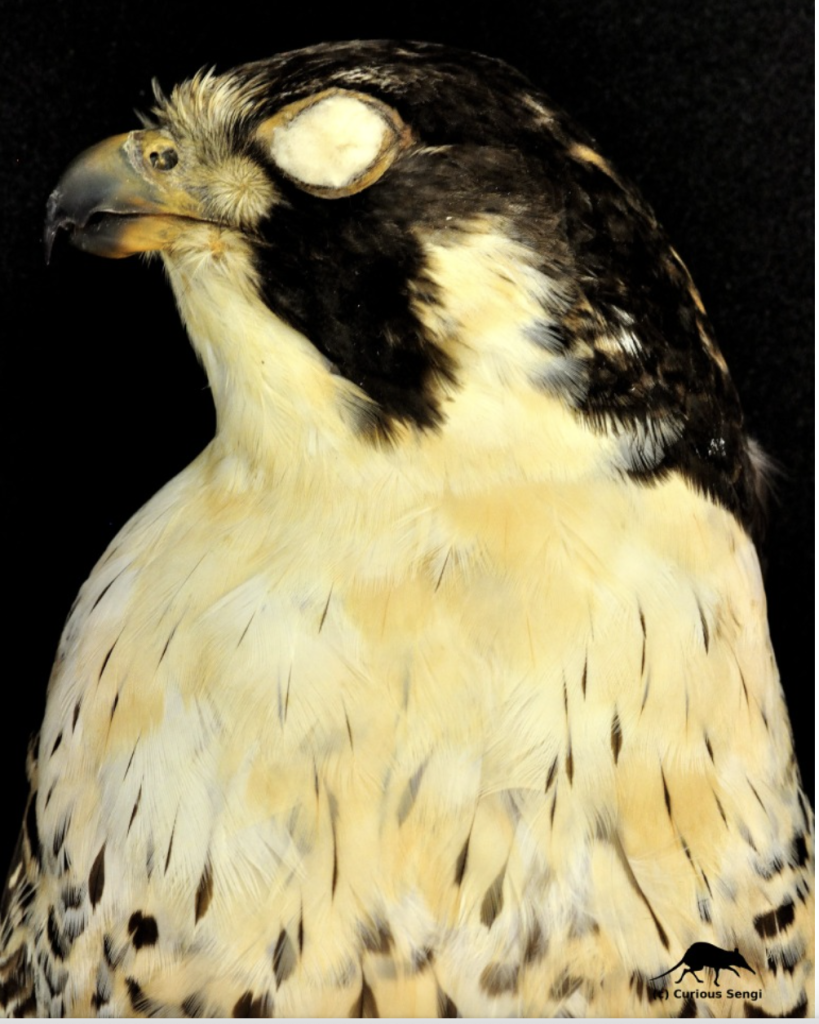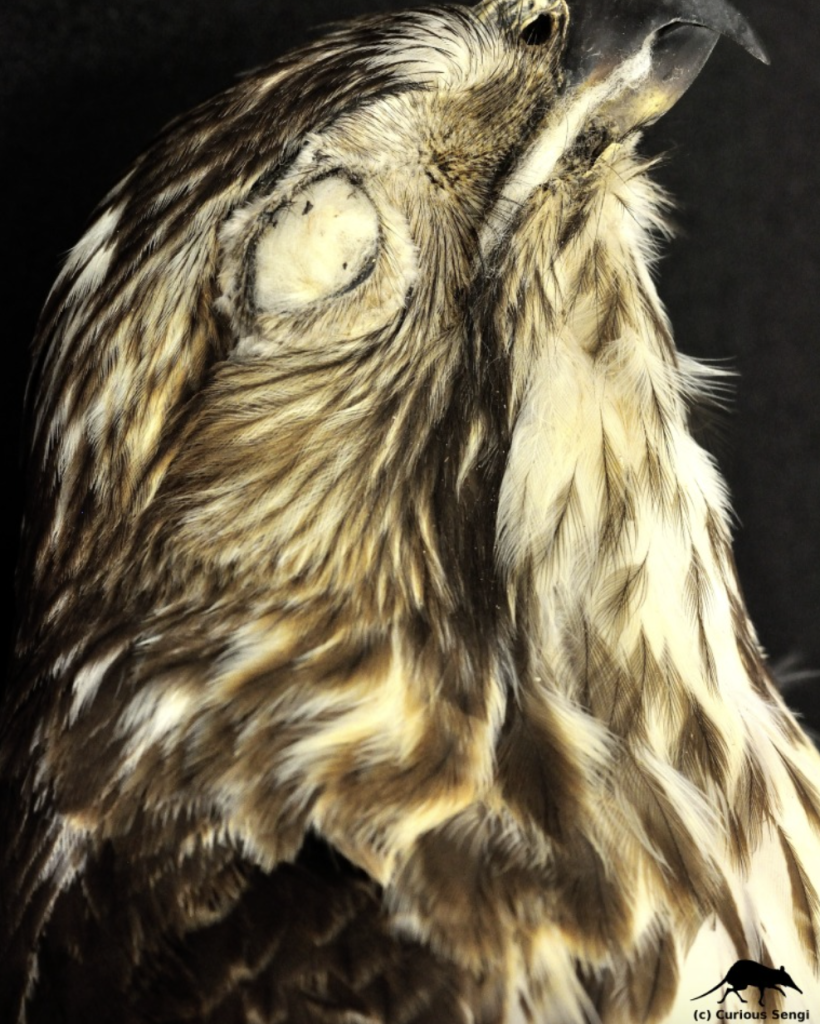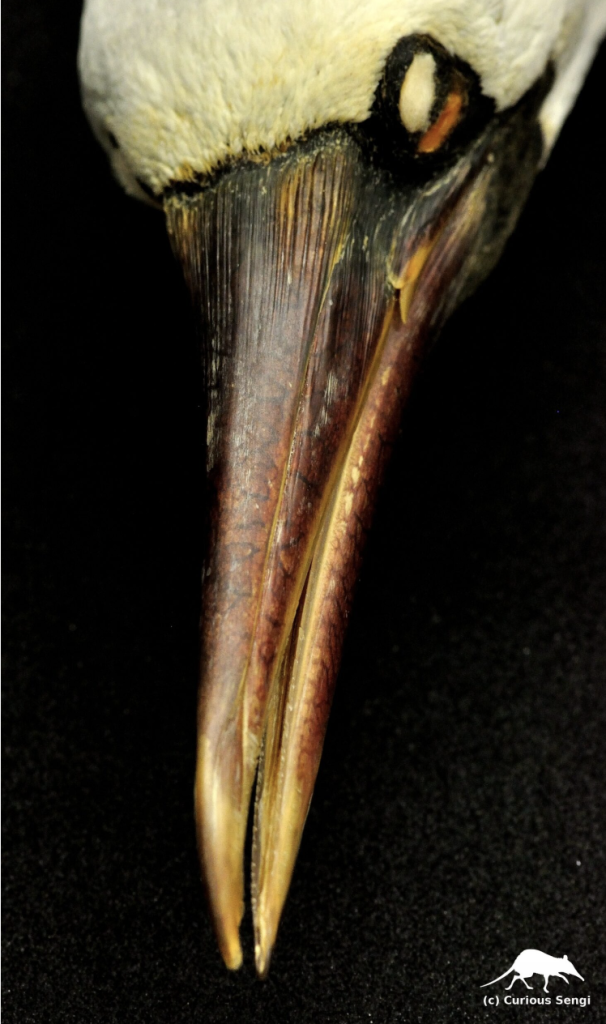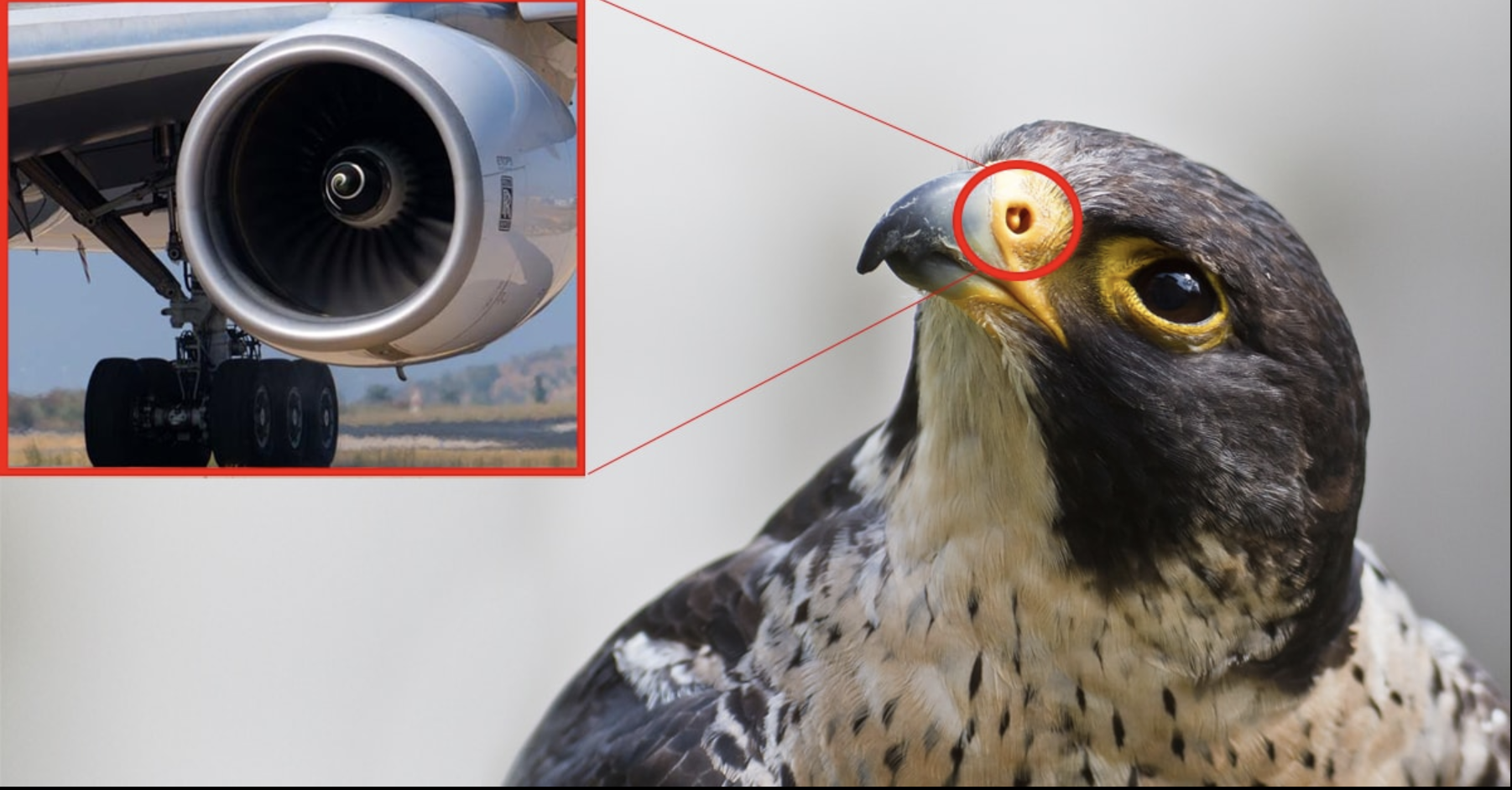People have wished they had animal skills and worked to make them work for them, but the ability of birds to fly has become the most overused example of this desire. We have broken down the parts of aerodynamics into things we can measure, analyze, and model in order to better understand flight. It’s clear that this strategy has worked pretty well for us. Just think about how fast a Boeing 747 can fly people from the East Coast to the West Coast of the United States. Pioneers who traveled by wagon would have needed months to make the same trip, which would have included dangerous trips through woods, plains that never end, deserts, snowy mountains, more deserts, and more mountains.

Falcon peregrinus, the Peregrine Falcon, is known for being one of the world’s fastest animals.
With our highly engineered view of flight, we often look back at living things and try to find parts of their genetic design that seem to work perfectly for certain ways of living. Take a look at the noses of two very different birds: the Peregrine Falcon (Falco peregrinus) and the gannet (Family Sulidae).

The Peregrine Falcon is a small bird in North America that is known for its amazing, fast dives. Most reports say that these dives, or stoops, happen at 200 mph (320 km/h). As Hagler (2012) puts it, the Peregrine is “a feathered bullet dropping out of the sky” and one of the fastest animals on Earth by this measure. When traveling at those speeds, many changes have to be made, some of which are less visible, like directing airflow into the nose for breathing. People say over and over that breathing in air at 200 miles per hour would blow out your lungs. To keep this from happening, the nares have bony tubercles that work like filters to keep air from getting into the respiratory system too quickly. According to these stories that are told over and over, the noses of Peregrine Falcons were the inspiration for the design of supersonic jet engine inlet cones.

That’s interesting, but what does it mean?
The Peregrine Falcon’s fall is known as the “stoop.” When the falcon stoops, it hits its food, which are usually birds, with a lot of force, which often kills it. It’s been said that the hit is strong enough to cut off the heads of animals that are being shot. Picture source: PBS Nature.

Starting with the fact that going fast won’t blow your lungs out. In fact, the opposite. There are two physical rules to remember in this case: (1) the Bernoulli Effect, which says that faster air makes the pressure of the air lower, and (2) the direction that is always favorably energetic is from high to low. As the Peregrine Falcon stoops and hits top speed, the nares will experience a drop in air pressure due to the faster air speed. To breathe in, air from outside the body with a relatively high pressure must rush into the lungs, which have a relatively low pressure. The falcon will eventually have a hard time breathing because the air pressure outside will get close to equal to the air pressure inside its lungs. Think about how hard it is to breathe when you’re facing a strong wind, riding a fast boat, or sticking your head out the window of your car on the freeway (which isn’t always a good idea). There are hard tubercles in the falcon’s nose that slow down the flow of air. This raises the air pressure and lets air enter the body. It looks like a smart way for evolution to adapt to very fast flying.

With this Peregrine Falcon, the bony tubercle looks like a bump in the middle of the nose.
Look at how the Red-Tailed Hawk (Buteo jamaicensis calurus), which is not related, does not have a narial protrusion.
When we look at how narial bony tubercles are distributed along the tree of life, this neat story gets a little messed up. This is a shape that all members of the Family Falconidae, which includes raptors of many sizes, shapes, and flight skills, share with the Peregrine Falcon. The Peregrine Falcon, which knocks its bird food out of the air, is at one end of the range. The caracaras are on the other end. They fly slowly while looking for dead animals, a lot like vultures. So, here’s the question: if the tubercles inside the Peregrine Falcon’s nose help it breathe at very high speeds, then why do all members of the Falconidae family have them? It’s possible that all Falconidae species shared narial tubercles with their ancestor, which is why all of their children still have this trait. The tubercles may have evolved to do something else, like measuring motion or temperature, and the Peregrines changed this structure to fit a new purpose. In the end, we don’t fully understand why the bony tubercles on the nose of Falconidae exist and what beneficial purpose they may serve.
In this American Kestrel (Falco sparverius sparverius), the bony tubercle can be seen in the nose. This shape is shared by all members of the Family Falconidae, no matter how fast they fly.
This Crested Caracara (Caracara cheriway cheriway) has a bony tubercle that can just barely be seen in its head. The Caracara is a slow-moving bird that flies, unlike the Peregrine. It is usually found on the ground, eating dead animals. However, this has not been proven yet. It’s possible that the bony tubercle changes shape and size based on how the bird flies.
We may have been sure of our explanation for the Peregrine Falcon’s strange nostrils because we had seen engineers use a similar method to control the amount of air that jet engines take in. As rocketry got better and more advanced after World War II, military aircraft broke more speed records. However, planes could only go so fast before their engines would choke and then stop. Rapidly, it became clear that the jet engine’s air flow wasn’t going through the cylinder as planned. Instead, it was being pushed away, carrying the oxygen needed for burning with it. The Bernoulli Effect and the flow from high pressure to low pressure are both to blame for this problem. Putting cone-shaped structures in the engine’s intake creates shockwaves that slow the flow of air and keep the engines going. The entrance cone invention made it possible to fly faster than sound. Chuck Yeager flew an experimental Bell X-1 plane faster than the speed of sound in 1947. This was known as Mach 1, which is 768 mph (1235 km/h) at sea level and is very fast.

A diagram of a jet engine that has been cut in half. If the air going into the engine (left) is going faster than sound, it needs to be slowed down so it can pass through the engine and start burning. The intake cone (called “inner body” here) slows down the flow of air.
One neat example of how nature directly influenced engineering is the way the outlet cone of a supersonic jet engine is shaped like the bony tubercle in a Peregrine Falcon’s nose. Even though I couldn’t find any evidence that experimental study was done on the aerodynamics of falcon nostrils, that doesn’t mean that an idea wasn’t sparked by a random observation.

Lockheed’s Skunk Works section, a secretive branch that works on researching advanced technologies, made the SR-71 Blackbird in 1966. Because the Blackbird was so different from any other plane ever made, some people who believe in conspiracies say it was based on technology found on UFOs. Definitely not alien technology, but take a look at the pointed protrusions coming from the engines on the wings that take in air. These inlet cones, which look like the bony tubercles found in Peregrine Falcon noses, let the Blackbird fly faster than Mach 3. So what came first: did nature motivate people to build things? Or did our ideas about the Peregrine Falcon come from engineering? In the late 1990s, the Blackbird was taken out of service. The picture comes from Wikimedia Commons.
Gannets are another fast-flying bird that has to deal with strong physical forces. People have seen these seabirds plunge dive from about 100 feet (30 m) up, pulling their wings back and making their bodies shape into a tight, streamline shape so they can cut through the water and catch fish. Birds of prey can be going as fast as 54 mph (86.4 km/h, or 24 m/s) when they hit the water. It’s very sad that 169 people have killed themselves by jumping off the Golden Gate Bridge in San Francisco. It was estimated that the impact speed was about 33 m/s. It was almost certain that every jump would end in death, with the collision killing most of the people. Ganes have developed a set of traits that help them deal with such intense hunting methods, just like the Peregrine Falcon. How does the gannet dive without getting water up its nose? Many people have had trouble swimming.

Picture source: BBC Earth.
People think that gannets get around the problem by not having any external nares at all.
As embryos in the egg, gannet nostrils grow in a way that is similar to those of many other bird species. An epithelial plug covers the openings of the nostrils and the vestibular cavity right next to them. In some birds, this plug breaks down later on to make room for the nares, but in gannets, it stays in place. In the end, the gannets’ external nares get wrapped in bone and the rhamphotheca, a keratinous sheath that goes around the beak, grows over them. It’s interesting that gannets still have well-developed olfactory structures even though their nostrils are totally blocked and air doesn’t flow through their nasal cavity.

The Peruvian Booby (Sula variegata), which is in the same family as gannets, does not have any visible nares that can be seen here. In most birds, the nostrils are close to the base of the upper beak. However, in gannets and boobies, the nostrils are totally hidden by bone growth and the beak’s keratinous sheath. This picture comes from the Yale Peabody Museum and Curious Sengi.

Nope, this view doesn’t show any noses either! This picture comes from the Yale Peabody Museum and Curious Sengi.

How do gannets get by without noses? In 1960, Macdonald talked about secondary external nares, which are like compensatory noses. They are made up of a gap in the corner of the mouth where the upper beak hangs over the lower one. This part that hangs over is made of the jugal bone, which is like our cheekbone. It is covered by a sliding plate of keratin. These two parts are only loosely attached to the rest of the head. When the animal dives, the pressure from the water will cause them to collapse against the sides of the beak, blocking these secondary external nares.
This is an Australasian Gannet (Morus serrator). Take a look at the keratinous plate of the beak that is under the black spot on the eye. It is shaped like a narrow triangle with a sharp point facing forward toward the tip of the beak. Macdonald says this is where the secondary external naris is located. This is a constant space between the upper and lower beaks that is covered by a “jugal operculum” that can be folded up. This picture comes from the Yale Peabody Museum and Curious Sengi.

Gannets don’t have any openings at all, which seems like a great way to keep water from forcing its way into their noses while they dive, which could damage them or let water into their respiratory system. But Macdonald saw some interesting patterns in other diving birds that were not linked. Cormorants (Family Phalacrocoracidae) do dive, but they do it from the water, not the air. Even though cormorants enter the water more gently, their noses are small and almost fully blocked. The Brown Pelican (Pelecanus occidentalis), on the other hand, has open airways and a heavy body. There is a flap of skin around the nose that can push up against the nostril and seal it like a valve when water pressure from the outside comes in.
It would be too simple to say that the full narial occlusion seen in gannets is directly linked to plunge diving. The story is more complicated than that. The cormorant’s almost complete lack of openings could be seen as a holdover from an ancestor that did deep dives. It might have grown for a different reason, though. There may be an evolutionary benefit to not getting water up your nose when you dive, as shown by the Brown Pelican’s different way of closing its nostrils. That a different method was used to solve the same problem also suggests that losing nostrils comes with some bad consequences. For instance, seagulls need glands that make salt to get rid of the extra salt they eat. Most of the time, these glands empty through the nose. Gannets have pretty small glands that make salt, so they have to throw out salty food from their mouths.
The Northern Gannet’s (Morus bassanus) skull. Bone has grown over the site of the external nares during growth. It is the long, thin bone that sticks out behind the lower jaw. This picture comes from the Yale Peabody Museum and Curious Sengi.
When paleontologists only have the bones of ancient animals to work with, they have to be extra careful when figuring out what parts of the body do and how they behaved. It would be too simple to say that blocked nostrils are directly linked to plunge diving, even in a modern animal like this Northern Gannet. This picture comes from the Yale Peabody Museum and Curious Sengi.
It’s never as simple as saying “structure X is perfectly adapted to serve purpose Y” when trying to figure out what a body part does. The world of biology is very different from the world of engineering planning. In our interpretations, we need to think about the baggage and limits that come from evolutionary history. We also need to do experiments to show that a certain structure does have a role that improves performance and remember that there are trade-offs.
